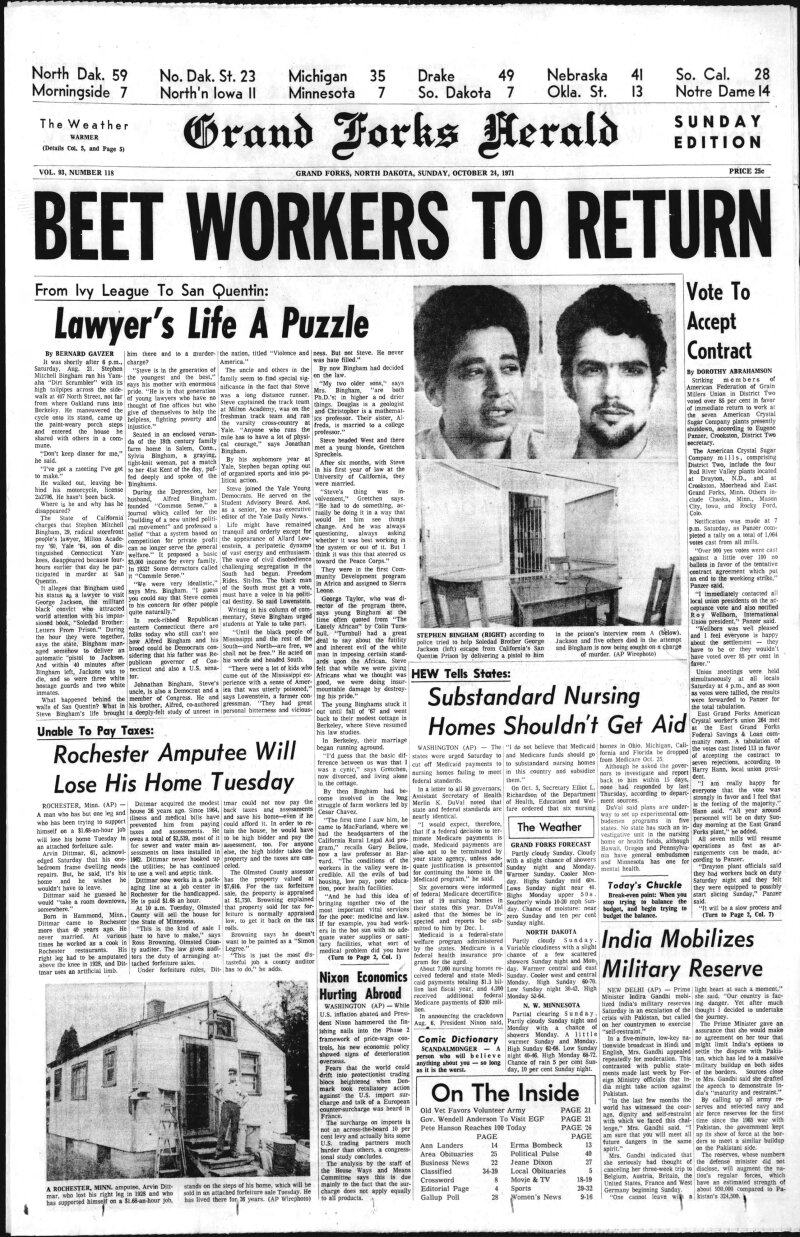On October 24, 1971, over 2,000 members of the Grain Millers Union returned to work after a weeklong strike at the American Crystal Sugar Company. The workers voted overwhelmingly, with more than 85% in favor of a new three-year contract that promises a substantial 32% increase in base pay, including a 12% hike in the first year. This agreement effectively ends the shutdown of seven plants, notably including four located in the Red River Valley.
In a statement made by Eugene Panzer, secretary of District Two, the tally showed that 1,064 votes were cast across all mills, with over 900 votes in favor of the contract. “I immediately contacted all local union presidents on the acceptance vote,” Panzer noted, expressing satisfaction with the outcome. Roy Wellborn, the president of the International Union, also expressed his pleasure with the settlement, reflecting the overall positive sentiment among the members.
Details of the Contract Agreement
The new contract includes not only the significant pay raise but also enhancements to fringe benefits. Specific improvements comprise a new severance program, updated disability payment clauses, increased hospital and medical premium coverage, an additional holiday, a night differential pay scale, extended vacation time based on company service, and double time for holidays. These factors contributed to a strong approval from union members, as local leaders felt the agreement reflected their needs and expectations.
Union meetings took place simultaneously at various locations on the evening of October 23, 1971, allowing for a swift collection and reporting of votes. In East Grand Forks, for instance, local union president Harry Hann reported a robust support for the new contract, with 113 votes in favor and only seven against. “I am really happy for everyone that the vote was strongly in favor,” Hann stated, indicating a consensus among the workers.
Resumption of Operations
Following the vote, workers began the process of returning to their posts at the seven affected plants, which include locations in Drayton, North Dakota, and Moorhead, East Grand Forks, and Chaska in Minnesota, as well as Mason City, Iowa, and Rocky Ford, Colorado. Panzer mentioned that operations would resume as quickly as possible, though he cautioned that it would take a few days to return to full capacity. “It will be a slow process and like starting a campaign all over again,” he explained, detailing the necessary preparations for machinery and equipment to be operational.
The strike had begun when negotiations between union representatives and the company broke down after the previous contract expired on August 1, 1971. While the exact dollar value of the new wage categories has yet to be calculated, estimates suggest that average pay could rise to approximately $3.50 an hour, with a range from $3.10 to $3.90 based on job classification.
With the approval of the new contract, both the workers and management can now focus on moving forward, ending a period of uncertainty and disruption for employees and the company alike. As operations resume, the affected communities can expect a return to normalcy following this significant labor dispute.







